The 17th Night of Museums will indeed take place this year. It will take place on July 3.
And to pay tribute to this beautiful event, we decided to tell you about some major works in the history of art. Because many of them contain hidden messages, evoked in dozens of mysterious history theories. It seems that Michelangelo, Vincent Van Gogh
and many others were even more awesome than we thought!
Michelangelo and the Sistine Chapel
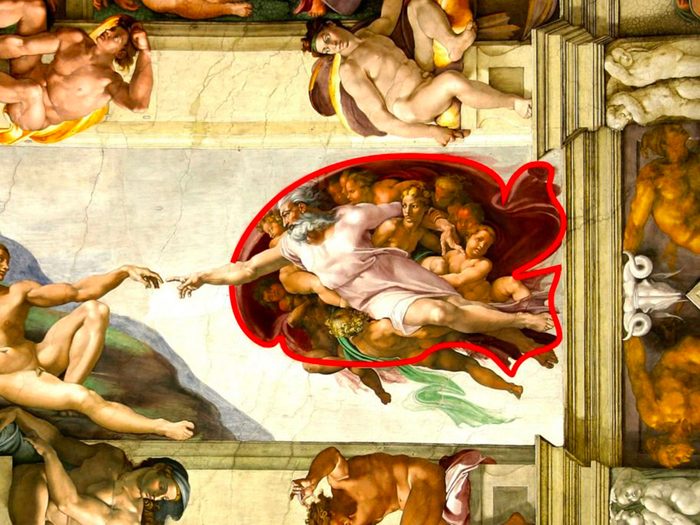
A kind of almost scientific secret is hidden in one of the most famous paintings
of all time. Indeed, on the ceiling of the Sistine Chapel, painted by Michelangelo,
we can observe God giving a spark of life to Adam. One theory tells us that the red cloak that unfolds behind God and the angels would have the shape of a human brain . Researchers have even managed to distinguish certain parts of the brain such as the vertebral artery , represented by the angel under God and his green scarf. There is of course
There are multiple reasons for these theories. The most popular suggests that Michelangelo painted
the brain as a protest against the church's rejection of science .
A message with a protest aim already at that time!
But that's not all
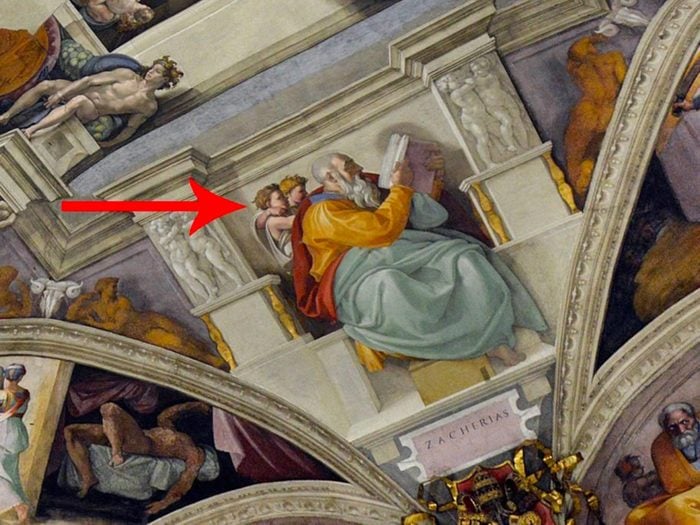
A rather crude angel can also be spotted on the ceiling of the chapel. The Pope
The man who commissioned this work, Julius II, was very little appreciated, including by Michelangelo.
This is why the latter decided to subtly attack this patron by painting
an angel making a very ancient hand gesture, called " making the fig " (Far la ficca in Italian), in his direction. In our country, we could compare this to giving the finger.
The Man in the Mirror
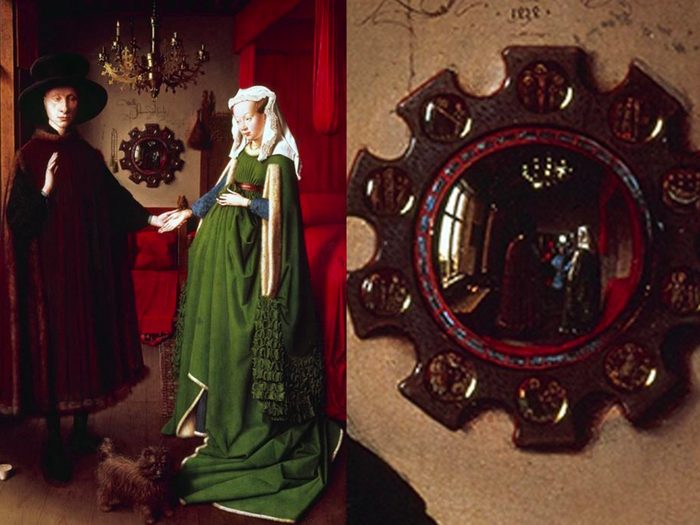
“spectators” of this scene.
It is generally accepted that van Eyck is the one with the raised hand.
Botticelli, an outstanding gardener
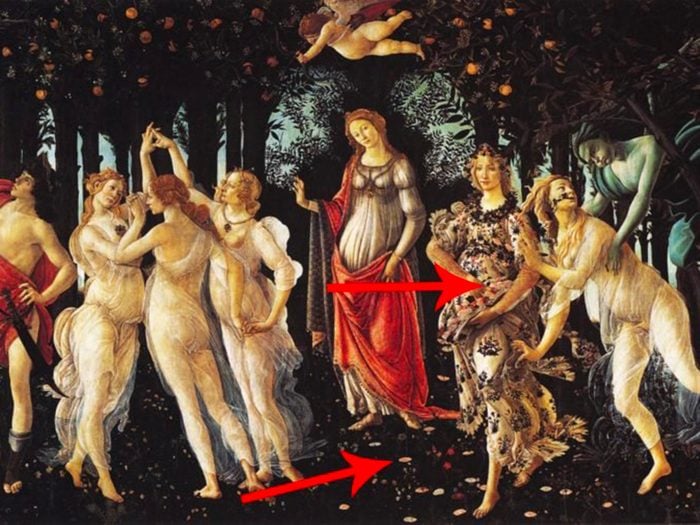
Behind the painting Primavera , Botticelli hid one of his favorite passions from us:
botany . Researchers have found up to 500 different species of plants , all painted with sufficient scientific precision to be identified.
A subtle message once again but which results from an impressive search for meaning on the part of the artist.
Death lurks in the room
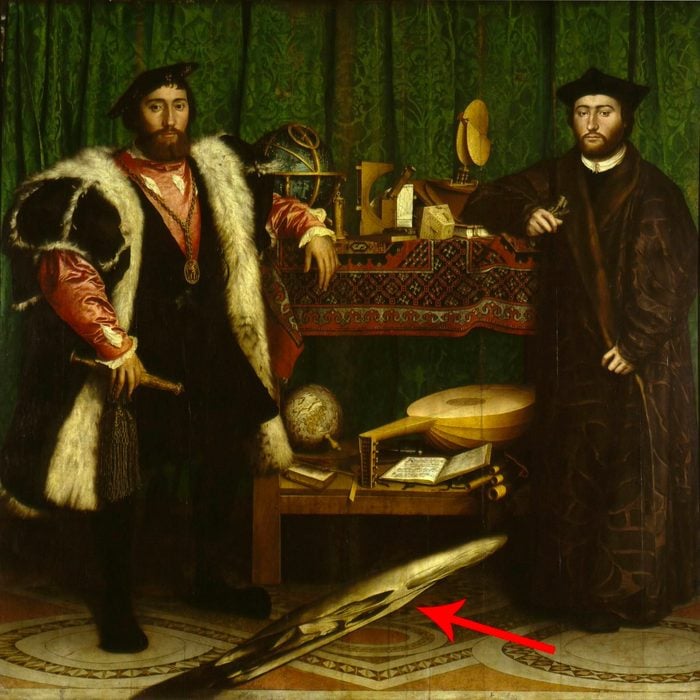
Can you find the skull hidden by Hans Holbein the Younger in this famous painting, The Ambassadors ? It's actually quite large. Can't find it? Look at that diagonal beige and black spot at the bottom of the painting. It becomes a skull if you look
the picture in the right way. Look, at the bottom right or left of the picture, and you will see
the skull stands out clearly. Genius once again.
Bare shoulder? Hide that from me!

This woman before you, dressed in a beautiful black satin dress, immortalized under the name of Madame X , is in reality Virginie Amélie Avegno Gautreau, a Parisian socialite.
Jon Singer Sargent, a 19th century painter, had decided to paint her portrait in the hope of one day becoming known. A painting that actually brought him a lot
of fame … But not as he would have liked. The original painting depicted Madame Gautreau in a dress with a drooping strap . Which at the time was totally scandalous, disrespectful… So the artist tried to repaint this strap. After deciding to leave
the capital, Sargent finally manages to sell his painting
at the Metropolitan Museum of Art in New York.
At Atelier St Eustache, we are always looking for meaning concerning each
models from our collections. And one of them, the Tokyo Prune, an arty model,
has been specially made with the aim of matching women who like to stand out thanks to original and aesthetic accessories. The hidden message behind these socks is that it perfectly brings together each of the patterns present
on other models from other collections. Between points, lines and curves,
This sock is a harmonious and elegant patchwork, ideal for women
who love singularity.

